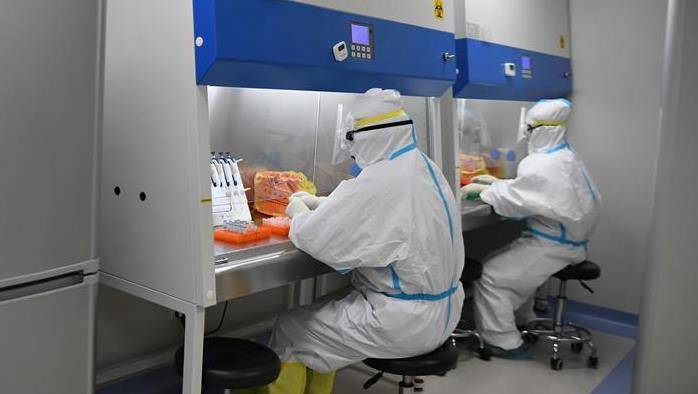work|Leave COVID-19 origin-tracing work to scientists

文章图片
(File photo)
Whenever there is a mass outbreak, one of the first questions scientists and the public ask is, “Where did this come from?”
In purely scientific rational and theoretical terms, discovering the origin of the virus, clarifying how it entered the human population, and tracking how it spread out will help the medical and public health communities to better understand the pandemic and how to prevent similar or more serious outbreaks in the future.
Tracing the origin of a virus is an extremely complex scientific problem that requires extensive fieldwork, multidisciplinary experimental testing, and a fair amount of luck. Scientists are discovering new viruses and pathogens every day, many of which can infect wild plants or animals without causing any disease. When it comes to zoonoses, testing sick animals where so-called “patient zero” is present, may seem like a solution, but wild hosts usually show no symptoms. Viruses and their hosts will adapt to each other until they jump to a new host species, usually without causing obvious disease symptoms.
For the novel coronavirus that causes COVID-19, the closest relative scientists have identified to date is the bat coronavirus RaTG13. The bat coronavirus RaTG13 shares more than 96% homology with the novel coronavirus. This degree of similarity means that RaTG13 is very close to the novel coronavirus, which confirms that the novel coronavirus may have originated in bats, but is still too far away from becoming the novel coronavirus capable of infecting humans to be its direct ancestor. It is possible that another host contracted the virus from the bat and passed it on to humans. Identifying the source of the new coronavirus will require the collection of additional wild samples. This is a difficult task, sampling bats is time consuming, and requires strict prevention of accidental infection. With associated coronaviruses found in bats throughout Asia, including Thailand and Japan, the effort is equivalent to finding a needle in a haystack.
【work|Leave COVID-19 origin-tracing work to scientists】Many viruses that have been prevalent throughout human history are difficult to trace back to their origins. For example, the Ebola virus has been circulating periodically since the 1970s, and scientists still do not know the origin of the Ebola virus. The origin of HIV was not relatively clear until 20 years after its spread around the world, and there is still debate about multiple interspecies transmission from apes. Phylogenetics, molecular clock, merger analysis, and genealogical approaches continue to provide new explanations for the transition from endemic to global epidemic HIV. The search for “patient zero” or “index cases,” the first human infections, also presents enormous ethical pitfalls, such as the demonized AIDS “patient zero,” Gaetan Dugas. It was only in 2016 that evolutionary biology research published in the journal Nature, which reanalyzed blood samples from early cases through “RNA jackhammering,” exonerated Dugas, proving that HIV had existed on American soil long before him. As for the early chain of HIV transmission, scientists are still inconclusive.
In addition to the scientific difficulties, we should be highly cautious because virus tracing is highly susceptible to being politicized and becoming a political tool. History has shown us over and over again that even though the germ theory has emerged and it is clear that infectious diseases spread across race and class, we “never wake up those who pretend to sleep”. Some politicians also have a habit of linking the source of disease to a particular ethnic group, even though history has taught health administrators time and again that politicization is not helpful and can even be a hindrance to controlling outbreaks. In his historical study of the 1916 polio epidemic, Naomi Rogers noted that as sanitation improved into the 20th century, the inability of infants to receive immunity from their mothers led to a polio epidemic in the United States. Despite the fact that the middle class was more susceptible to the disease, health officials at the time refused to follow this lead, instead targeting immigrant families from southern and eastern Europe as the source of the epidemic and the target of blame.
以上关于本文的内容,仅作参考!温馨提示:如遇专业性较强的问题(如:疾病、健康、理财等),还请咨询专业人士给予相关指导!
「辽宁龙网」www.liaoninglong.com小编还为您精选了以下内容,希望对您有所帮助:- Padlock 更轻价更低 闪电推出新款S-Works 7系带锁鞋
- 相关招聘丨1626 寻找有趣的小伙伴
- andOne-stop service center for foreigners working in China is now in service.
- 珠宝 戴比尔斯珠宝NATURAL WORKS OF ART 高级珠宝展暨晚宴闪耀举行
- 戴比尔斯珠宝NATURAL WORKS OF ART 高级珠宝展暨晚宴闪耀举行
- 产品 ZEROWORKS X AIRWALK 联名滑板 AC 1:6潮流兵人可动人偶
- 线下豆瓣迈出线下服务第一步,和WeWork共推沉浸式文化空间
- 来袭|酷比魔方秋季新品iWORK 20 Pro,X Game焕新来袭!
- 万众|万众期待,不负等待,酷比魔方iWORK 20 Pro 9月16号 15:00 新品发布
- deadly,can,have,deadly|COVID-19 vaccine conspiracy theories can have "deadly consequences"
